Madame Roland
 From Nwe
From Nwe
| Marie-Jeanne Roland de la Platière | |
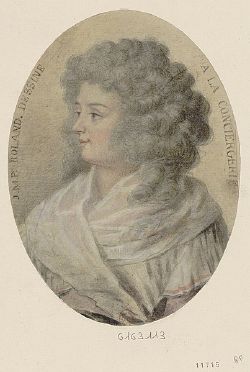
Madame Roland in the Conciergerie, shortly before her execution
|
|
| Born | Marie-Jeanne Phlipon March 17 1754 Paris, Kingdom of France |
|---|---|
| Died | 8 November 1793 (aged 39) Place de la Révolution, Paris, French First Republic |
| Occupation | political activist, salonniere, writer |
| Spouse(s) | Jean-Marie Roland de la Platière (m. 1780; died 1793) |
| Children | Eudora Roland de la Platière |
| Signature
|
|
Marie-Jeanne 'Manon' Roland de la Platière (Paris, March 17, 1754 – Paris, November 8, 1793), born Marie-Jeanne Phlipon, and best known under the name Madame Roland, was a French revolutionary, salonnière, and writer.
Initially she led a quiet and unremarkable life as a provincial intellectual with her husband, the economist Jean-Marie Roland de la Platière. She became interested in politics only when the French Revolution broke out in 1789. She spent the first years of the revolution in Lyon, where her husband was elected to the city council. During this period she developed a network of contacts with politicians and journalists; her reports on developments in Lyon were published in national revolutionary newspapers.
In 1791 the couple settled in Paris, where Madame Roland soon established herself as a leading figure within the political group the Girondins. She was known for her intelligence, astute political analyses and her tenacity, and was a good lobbyist and negotiator. The salon she hosted in her home several times a week was an important meeting place for politicians. However, she was supremely confident in her views and alienated important political leaders like Robespierre and Danton with her inflexibility.
When her husband unexpectedly became Minister of the Interior in 1792, her political influence grew. She had control over the content of ministerial letters, memorandums and speeches, was involved in decisions about political appointments, and was in charge of a bureau set up to influence public opinion in France. She was both admired and reviled, and particularly hated by the sans-culottes of Paris. The publicists Marat and Hébert, who published the two most influential revolutionary newspapers and were allied with the sans culottes, conducted a smear campaign against Madame Roland as part of the power struggle between the Girondins and the more radical factions, which included members of Jacobin Club and Montagnards. In June 1793, she was the first Girondin to be arrested during the Terror and was guillotined a few months later.
Madame Roland wrote her memoirs while she was imprisoned in the months before her execution. They are – like her letters – a valuable source of information about the first years of the French Revolution.
Early years
Childhood

Marie-Jeanne Phlipon (or in the Bibliothèque Nationale de France Jeanne-Marie), known as Manon, was the daughter of Pierre Gatien Phlipon, an engraver, and his wife Marguerite Bimont, daughter of a haberdasher. Her father ran a successful business and the family lived in reasonable prosperity on the Quai de l'Horloge in Paris. She was the couple's only surviving child; six siblings died in infancy. The first two years of her life she lived with a wet nurse in Arpajon, a small town south-east of Paris.[1]
Manon taught herself to read as a five-year-old and during the catechism lessons, the local priests also noticed she was very intelligent. Because she was an only child, she received more education than was customary for a girl from her social background at that time; however, it still fell short of the level of schooling a boy would have received. Teachers came to the family home for subjects such as calligraphy, history, geography and music. Her father taught her drawing and art history, an uncle who was a priest gave her some Latin lessons and her grandmother, who had been a governess, took care of spelling and grammar. In addition, she learned from her mother how to run a household.[2]
As a child, she was very religious. At her own request, she lived in a convent for a year to prepare herself for her first communion when she was eleven. Only a few years later she would begin to question the doctrines of the Roman Catholic Church. Although she eventually turned away from the church, she continued to believe all her life in the existence of God, the immortality of the soul, and the moral obligation to do good. Her ideas are very close to deism.[3]
Studying and writing
After returning home from the convent, she received little additional formal education but continued to read and study. She was largely an autodidact. She read books on all subjects: history, mathematics, agriculture and law. She developed a passion for the classics. Like many of her contemporaries, she was inspired by the biographies of famous Greeks and Romans in Plutarch's Vitae Parallelae (Parallel Lives).[4]
Manon Phlipon's ideas on social relations in France were shaped, among other things, by a visit to acquaintances of her grandmother at the court of Versailles. She was not impressed by the self-serving behavior of the aristocrats she met. She found it remarkable that people were given privileges because of their family of birth rather than on merit. She immersed herself in philosophy, particularly in the works of Jean-Jacques Rousseau. His democratic ideas strongly influenced her thinking about politics and social justice. Rousseau was also very important to her in other areas. She later said that his books had shown her how to lead a happy and fulfilled life. Throughout her life she would regularly reread Rousseau's Julie, ou La Nouvelle Héloïse, using it as a source of inspiration.[5]
She was dissatisfied with the opportunities available to her as a woman and wrote to friends that she would have preferred to have lived in Roman times. For a while, she seriously considered taking over her father's business. She corresponded with a number of erudite older men - mainly clients of her father's - who acted as intellectual mentors. She started writing philosophical essays herself which she circulated in manuscript among her friends under the title Oeuvre des loisirs ('work for relaxation'). In 1777 she took part in an essay competition on the theme 'How the education of women can help make men better.' Her essay did not receive a prize.[6]
Before the revolution
Marriage
In the social milieu of the Phlipons, marriages were usually arranged. It was unusual for a young woman like Manon Phlipon, the only child of fairly prosperous parents, not to be married by the age of twenty. She received at least ten proposals of marriage, but rejected all of them. She had a brief romance with the writer Pahin de la Blancherie, which for her ended in a painful disappointment. A friend of her father, a widower of 56 with whom she corresponded about philosophical issues, asked her to come and live with him on his estate so that they could study philosophy together. She hinted to him that she might consider a platonic marriage, but nothing came of it.[7]
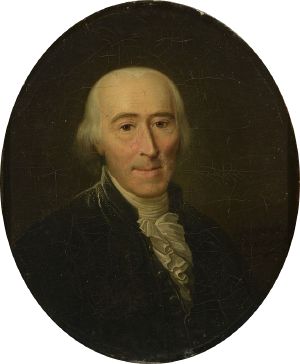
In 1776, Manon Phlipon met Jean-Marie Roland de la Platière, who was twenty years her senior.[8] He was Inspector de Manufactures in Picardy and as such charged with quality control of the products of local manufacturers and craftsmen. He was an expert in the field of production, trade and economic policy, especially of the textile industry. He was intelligent, well-read and well-traveled, but he was also known as a difficult human being: reluctant to take into consideration any opinions but his own and easily irritated. Because of this, he often did not succeed in implementing the economic reforms he favored, and his career was not as successful as he believed he deserved.[9]
The Roland family had once belonged to the lower nobility, but by the end of the 18th century no longer held a title. There was a clear difference in social status compared to Manon Phlipon's family of artisans and shopkeepers. This was her reason for refusing Roland's first marriage proposal in 1778. A year later she did accept. The wedding plans were initially kept secret because Roland expected objections from his family. By the standards of that time, this was a 'mesalliance': a marriage considered inappropriate due to the large difference in social status between the spouses.[10]
They were married in February 1780, initially living in Paris where Roland worked at the Ministry of the Interior. From the very first, Madame Roland helped her husband in his work, acting more or less as his secretary. In her spare time she attended lectures on natural history in the Jardin des Plantes, the botanical garden of Paris. Here she met Louis-Augustin Bosc d'Antic, a natural historian who remained a close friend until her death.[11] Her friendship with François Xavier Lanthenas, later a parliamentarian, also dates from this time.[12]
Amiens and Lyon
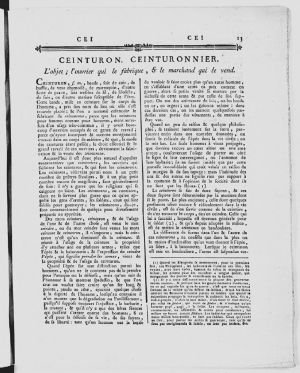
After a year in Paris the couple moved to Amiens. Their only child Eudora was born there in 1781. Unusual for that time - but entirely in line with Rousseau's theories - Madame Roland breastfed her daughter herself instead of hiring a wet nurse. She wrote a particularly detailed and candid report of the birth and the problems with breastfeeding, and is one of the first women of this time to write openly about such matters. The report was published after her death.[13]
The couple lived a very quiet life in Amiens and had few social contacts. In Paris, Madame Roland had already supported her husband in his work and their cooperation now developed further. At first she was mainly involved in copying texts and assisting his research. Her role was clearly subordinate. In her memoirs she looks back on this situation with some resentment, but her letters from that period do not show that she objected at the time. Her involvement gradually increased. She began to edit and modify text, and eventually wrote major sections herself. Her husband apparently initially did not realize that some texts were hers and not his own. Within a few years, she developed into the better writer, which was also acknowledged by Jean-Marie Roland. In the end he fully accepted her as his intellectual equal and there was an equal partnership.[14][15]
In 1784, Madame Roland visited Paris for a few weeks to acquire a peerage for her husband. The financial privileges associated with a title would allow him to give up his job as an inspector and focus entirely on writing and research. She discovered that she had a talent for lobbying and negotiating. The peerage did not materialize. In the course of his professional life her husband had too often antagonized his superiors. She did manage to obtain an appointment for him in Lyon that was less demanding and better paid than his post in Amiens.[16] Before the move to Lyon, the couple visited England, where Madame Roland attended a debate in the House of Commons between the legendary political opponents William Pitt the Younger and Charles James Fox.
Although Lyon was Roland's official place of work the family usually lived in Villefranche-sur-Saône, about thirty kilometers north of Lyon. Madame Roland focused on the education of her daughter Eudora, who to her great disappointment turned out to be less interested in books and acquiring knowledge than she had been at that age. In the following years, she would occasionally in letters to friends (and in her memoirs) continue to call her daughter ’slow’ and lament that her child had such bad taste.[17] Together with her husband she worked on the Encyclopédie méthodique - Dictionnaire des Arts and Métiers, a sequel to the Encyclopédie of Diderot and D'Alembert, which focused on trade and industry.[18] In 1787 the couple made a trip to Switzerland, where, at the request of Madame Roland, they also visited sites that had played a role in the life of Rousseau.[19]
The Revolution
From a distance: 1789–1791
Throughout France, and especially in Paris, protests against the social, economic and political conditions were mounting. The Rolands were in many ways representative of the rising revolutionary elite. They had obtained their social position through work and not through birth, and resented the court in Versailles with its corruption and privileges. They deliberately chose a fairly sober, puritan lifestyle. They favored a liberal economy and the abolition of old regulations, and advocated relief for the poor.[20] When the French States General were convened in 1789, Madame Roland and her husband were involved in drawing up the local Cahier de Doléances, the document which the King requested, in which the citizens of the country could express their grievances about the political and economic system.[21] Politics had played no major role in Madame Roland's correspondence before 1789, but in the course of that year she became more and more fascinated by political developments.
After the storming of the Bastille on July 14, 1789, her thinking radicalized quickly and there was a complete change in the tone and content of her letters.[22] She was no longer interested in societal reform, but advocated revolution. Institutions from the old regime were no longer acceptable to her. In her view, the people had taken over sovereignty and a completely new form of government had to be developed. Unlike many other revolutionaries, she was quick to argue for the establishment of a republic. In her political thinking, Madame Roland was irreconcilably radical at this point in time. She was not inclined to compromise. To achieve her revolutionary ideals she found the use of force, and even civil war, acceptable.[23]
During the first eighteen months of the French Revolution the Rolands were based in Lyon, although they still lived in Villefranche part of the time. Madame Roland soon became convinced that a counter-revolution was being plotted. She tried to mobilize her friends through her letters, not hesitating to spread unfounded rumors about events and about people with whom she did not agree.[24] Meanwhile, it had become common knowledge in Lyon that the Rolands sympathized with the revolutionaries and had supported the establishment of radical political clubs, for which they were hated by representatives of the old elite.
Madame Roland did not publicly take part in political discussions, but still managed to gain political influence during this period. She corresponded with a network of publicists and politicians, including the Parisian journalist Jacques Pierre Brissot, the future leader of the Girondins, and the lawyer Jean-Henri Bancal d'Issarts. In her letters she described and analyzed the developments in Lyon. At least on five occasions Brissot published excerpts from her letters as articles in his newspaper Le Patriote Francaise, so that her opinions were discussed outside Lyon. Luc-Antoine de Champagneux did the same in his newspaper Le courier de Lyon. She was one of the few female correspondents in the revolutionary press. Because her contributions were not published under her own name, but anonymously or as 'a woman from the south,' it is impossible to determine with certainty how many articles written by Madame Roland appeared in the press.[25]
Activist and salonniere
In 1790 Jean-Marie Roland was elected in the city council of Lyon where he advocated a moderate revolutionary administration. The Rolands now settled in Lyons but in order to get money for the revolutionary reform they left for Paris in 1791, for what was to be a short stay.

Madame Roland soon became a well-known figure in political circles in Paris, especially thanks to Brissot, who introduced her everywhere. As always, she worked alongside her husband, although the routine copying and editing work was now done by an assistant, Sophie Grandchamp. Madame Roland wrote most of her husbands official letters and regretted that she could not go to the new National Assembly herself to argue the case of Lyon, but women were admitted only to the public gallery. When she observed the debates from the gallery, it annoyed her that the conservatives were so much better and more eloquent in the debates than the revolutionaries, who she considered ideologically superior. Outside the assembly she was active as a lobbyist. With Roland, she was a regular visitor at the Jacobin club (here too women were only allowed access to the public gallery).[26][27]
From April 1791 she hosted a salon in her home several times a week, attended by republicans from bourgeois circles. Among the visitors were Maximilien de Robespierre and the American revolutionary, Thomas Paine.[28]
During these events, Madame Roland always sat at a table by the window, reading, writing letters or doing needlework. She never involved herself in the conversations going on around her but listened carefully. Her considerable political influence was not exerted by participating in public debate (which she found unseemly for a woman), but through letters and personal conversations. She was known for her sharp political analyses and her ideological tenacity, and was widely recognized as one of the most important people in the group around Brissot. She was always asked for advice on political strategy and she contributed to the content of letters, parliamentary bills and speeches. She was described by contemporaries as a charming woman and a brilliant conversationalist.[29]
Madame Roland's salon is one of the main reasons why she is remembered but it may not have been a salon in the usual sense of the term. The gatherings she hosted were strictly political and not social in character; hardly any food or drink was served. They took place in the few hours between the end of the debates in the assembly and the beginning of the meetings in the Jacobin Club. Aside from Madame Roland herself, no women were present. This distinguished them from the events hosted by Louise de Kéralio, Sophie de Condorcet and Madame de Staël. Although attended by revolutionaries their gatherings were more like the aristocratic salons of the Ancien Régime, an impression that Madame Roland wanted to avoid at all costs.[30][31]
Political ideas
Madame Roland is inextricably linked to the Girondins. Both she and her husband were considered to be part of the leadership of Girondin faction, also known as the Brissotins after their leader, Jacques Pierre Brissot. Originally, the Girondins, including the Rolands, were part of the wider Jacobin movement. As the revolution progressed, they began to distance themselves from the Jacobins, who became dominated by radical Parisian leaders like Georges Danton and Jean-Paul Marat. The Girondins opposed the influence Paris had on national politics in preference to federalism; many of the Girondins politicians came from outside the capital.[32] They belonged to the bourgeoisie and positioned themselves as the guardians of the rule of law against the lawlessness of the masses. In this aspect, too, they differed fundamentally from the Jacobins, who saw themselves as the representatives of the sans-culottes, the workers and shopkeepers.[33]
In power: the Ministry of the Interior
Revolution gathering speed

In the months immediately after her arrival in Paris, Madame Roland was not satisfied with the progress of social and political change in France, which she felt to be neither fast or far-reaching enough. When King Louis XVI tried to flee the country with his family in June 1791, the revolution gained momentum. Madame Roland herself took to the streets to lobby for the introduction of a republic. She also became a member of a political club under her own name for the first time, despite her conviction that women should not have a role in public life.[35] She felt that at that point in time there was so much at stake that everyone - man or woman - had to fully exert themselves to bring about change. In July of that year, a demonstration on the Champs de Mars led to a massacre: the National Guard opened fire on demonstrators, killing possibly as many as 50 people. Many prominent revolutionaries feared for their lives and fled. The Rolands provided a temporary hiding place for Louise de Kéralio and her husband François Robert.[36]
Soon divisions began to occur within the revolutionaries in the legislative assembly, particularly as to whether France should start a war against Prussia and Austria. Brissot and most of the Girondins were in favor. They feared military support for the monarchy from Prussia and Austria, and believed they could reshape the governments of Europe. Robespierre opposed, wishing first to put internal affairs in order. The political situation was so divided that it was next to impossible to form a stable government. There were no ministerial candidates that were acceptable to all parties (including the king and the court). The Girondins were given the opportunity to put their ideas into practice. King Louis XVI asked them to appoint three ministers. In March 1792 Roland was appointed Minister of the Interior. His appointment came so unexpectedly that the Rolands at first thought Brissot was joking. There is no indication that they were actively seeking a government post for Roland.During 1790 - 1792, the Rolands were exploring the idea to set up a community of friends living according to the ideal of the Revolution in a rural area in France, or possibly in America. This plan, which involved Brissot, Bancal d'Issarts and Lanthenas, is frequently mentioned in their letters; they did not discuss a political appointment. The couple moved into the Hôtel Pontchartran, the official residence of the minister, but kept on their small apartment in the city - just in case.[37]
First term of office
The office of Minister of the Interior was difficult and the work load was extremely heavy. The ministry was responsible for elections, education, agriculture, industry, commerce, roads, public order, relief for the poor and the working of the government. Madame Roland remained the driving force behind her husband's work. She commented on all documents, wrote letters and memorandums, and had a major say in appointments, such as Joseph Servan de Gerbey as minister of war.
In April 1792, the war which the Girondins under the leadership of Brissot wanted, broke out. Madame Roland wrote a reproachful letter to Robespierre because he still opposed the idea. This led to the end of the friendly relations between Robespierre and the Rolands; eventually he would become a sworn enemy of the Girondins and of Madame Roland.[38]
Madame Roland was able to convince her husband and the other ministers that the king was plotting to restore the Ancien Régime. It was her idea to establish an army camp near Paris with 20,000 soldiers from all over France. These troops would intervene in the event of a possible counter-revolution in the capital. When Louis XVI hesitated to sign this into law, Roland sent him a disrespectful protest letter and published it before the king could respond. Madame Roland is rather vague in her memoirs as to whether she was merely involved in editing the letter, or whether she wrote the whole text. The latter is considered most likely by her biographers. In any case, it was her idea to publish the letter to get more support in the assembly and in the population.[39][40]
On June 10, 1792, Louis XVI sacked Jean-Marie Roland and the two other Girondin ministers. After this, radical Jacobins and Montagnards took the political initiative, which eventually led to the end of the monarchy on August 10. Roland was then reappointed as minister.
Second term of office
The king's fall heralded the start of the Terror, a period in which the revolutionaries saw enemies of the revolution among their opponents. Many went to the guillotine. In radical circles the position of the Rolands was controversial. The Jacobins, the Montagnards and the Paris Commune viewed them with suspicion. Roland's service as minister under Louis XVI was seen as collaborating with the Ancien Régime. His dismissal by the king had only led to a temporary restoration of their reputation.

For her part, Madame Roland had no sympathy for 'hooligans' like the Jacobins and the Montagnards. Although in letters written during the early days of the revolution she had found the use of violence acceptable, she had a great aversion to brutal and uncivilized behavior. She also resented the uncouth Jacobin foreman Georges Danton, and did not respond to his overtures to cooperate with her. Some historians argue that her refusal to enter into an alliance with Danton ultimately contributed to the fall of the Girondins.[41]
When during the September Massacres hundreds of prisoners were slaughtered in Parisian prisons because they were suspected of anti-revolutionary sympathies, Madame Roland wrote to a friend that she was beginning to feel ashamed of the revolution. Determining who was responsible for this massacre became another point of contention between the various factions. Madame Roland - and most of the other Girondins - pointed to Marat, Danton and Robespierre as the instigators of the violence. In particular, she blamed her bête noire, Danton.[42] Political opponents of the Rolands pointed out that 'their' Ministry of the Interior was responsible for the prisons and had taken very little action to prevent or stop the violence.[43]
During Roland's second term of office, Madame Roland again occupied an important position. It was common knowledge that she wrote most of her husband's political texts and that he fully relied on her judgment and ideas. Both Danton and Marat publicly mocked him for it. She had her own office in the ministry and directed the work of the Bureau d'esprit public (the public opinion office), which aimed to spread the revolutionary ideals among the population. Opponents of the Rolands accused them of using the Office to issue state propaganda in support of the Girondin cause. Although there is no evidence that the Rolands were appropriating public money, it is certain that they were involved in attempts to blacken their political opponents. At least one of the secret agents run by the ministry reported directly to Madame Roland.[44]
The private life of Madame Roland was turbulent during this period. A passionate but in her own words platonic romance had developed between her and the Girondin deputy, François Buzot, who she had first met at her salon. This affected her relationship with her husband, who found the idea that his wife was in love with another man difficult to bear.[45] The romance with Buzot was possibly also one of the factors contributing to the break with a political ally; her old friend Lanthenas, now a parliamentarian, had for years been in love with her himself, and now distanced himself from the circle around Madame Roland and the Girondins.[46]
Downfall
Fall of the Girondins
Radical newspapers and pamphlets began to spread more and more rumors about anti-revolutionary conspiracies that supposedly were forged at the Rolands' home. The rather sober dinners that Madame Roland gave twice a week (successors of the 'salon' she hosted before Jean-Marie Roland became minister) were depicted as decadent events where politicians were seduced to join the "Roland clique." Jean-Paul Marat, Jacques-René Hébert and Camille Desmoulins depicted Madame Roland as a manipulative courtesan who deceived the virtuous Roland. In their articles and pamphlets they compared her to Madame Du Barry and Marie Antoinette. Although Danton and Robespierre also attacked her in their writings, they presented her as a dangerous political opponent and not as a wicked female.[47]
- Madame Roland's political opponents
-

Marat
-

Hébert
-

Desmoulins
-

Danton
-

Robespierre
In December 1792, Madame Roland had to appear before the National Convention (the new Legislative Assembly) on charges of corresponding with aristocrats who had fled to England. She defended herself so well that the deputies applauded while the public gallery remained silent. Her reputation among the people of Paris was poor and there were fears of an assassination attempt. For her own safety she no longer went out into the streets. She slept with a loaded gun within reach. In case of an attack she wanted to be able to end her life, so as not to fall into the hands of the sans-culottes alive.[48]
Political relations were strained further because of the trial of the king and disagreements about the punishment that should be imposed on him. Most Girondin deputies voted against the death penalty, or at least against an immediate execution of the king. Madame Roland's letters indicate that she, too, was against the death sentence. After the execution of Louis XVI on January 21, 1793, Jean-Marie Roland resigned as minister. The reasons are not entirely clear. It is possible that he resigned in protest against the execution, but it could have also been because the work load, the ongoing personal and political attacks by the radicals, and the marital problems had become too much for him. Almost immediately, his papers were confiscated and an investigation was started into his actions as minister. The Rolands were also forbidden to leave Paris. This was possibly a reprisal by his political opponents. A few months earlier, Roland had opened a strongbox with confidential documents of Louis XVI. He had handed this over to the Convention with the announcement that several delegates (none of them Girondins) appeared to have conspired with the king. He was accused of having destroyed papers that could have incriminated the Girondins.[49]
In April of that year, Robespierre openly accused the Girondins of betraying the Revolution. A few weeks later, on May 31, a 'revolutionary committee' (possibly set up by the Paris Commune) made an attempt to arrest Roland. He managed to escape. After hiding with the Rolands' friend, the naturalist Bosc d'Antic, in a former priory in the forest of Montmorency, Roland fled to Amiens and from there to Rouen. Madame Roland refused to flee or go into hiding. She even went to the Convention to personally protest against the attempted arrest of her husband. In her memoires she does not fully explain why she acted the way she did. Possibly she was convinced that there was no legal basis to arrest her, but in the early morning of June 1, 1793 she was arrested at her home and transferred to the prison in the abbey of Saint-Germain-des-Prés. She was the first prominent Girondin to be incarcerated. In the subsequent days, a wave of arrests followed. A number of Girondin politicians, including Buzot, managed to escape from Paris.[50]
Imprisonment
In prison, Madame Roland was allowed to receive visitors. Her assistant, Sophie Grandchamp, came every other day. Bosc d'Antic brought her flowers from the botanical garden on his regular visits. They smuggled out her letters to Buzot and presumably also to her husband (any letters to Roland have been lost). She studied English and even had a piano in her cell for a while.[51]
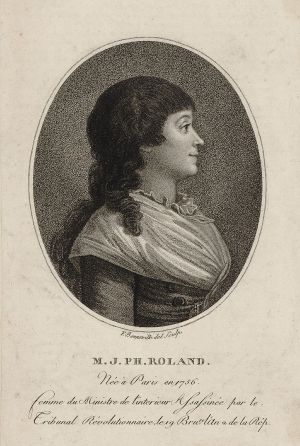
On June 24 she was released unexpectedly because the legal basis for her arrest had been flawed, but was rearrested on a new indictment the very moment she tried to enter her home. She spent the rest of her imprisonment in the harsher prison of Sainte Pelagie. She was very concerned about the fate of Buzot, more than about her husband. She was hurt and angry that in his memoires her husband planned to hold Buzot responsible for the crisis in their marriage. With some difficulty she managed to convince him to destroy the manuscript. She was convinced that she would eventually be put to death but refused to cooperate with an escape plan organized by Roland which involved exchanging clothes with a visitor because she thought this too risky for the visitor.[52]
Outside of Paris, in the summer of 1793 resistance grew against the events in the capital. A revolt broke out in Lyon, and there were centers of resistance in Brittany and Normandy. In the provinces some Girondins argued in favor of a federal republic or even secession from "Paris."[53] Madame Roland implored her friends not to put themselves at risk but Buzot, who reportedly always carried a miniature of Madame Roland and a lock of her hair with him, was involved in attempts to organize a revolt in Caen. The fate of the imprisoned Girondins was sealed when Charlotte Corday, a Girondin sympathizer from Caen, assassinated the popular Marat in Paris.[54]
When Madame Roland heard in October that Buzot, too, was in danger of being arrested, she tried to end her life by refusing food. Bosc d'Antic and Sophie Grandchamp were able to convince her that it would be better to stand trial, because that way she would be able to answer her accusers and save her reputation.[55]
Trial and execution

On October 31, 1793, twenty-one Girondin politicians were executed after a short trial. Most of them were known to Madame Roland. The group included her good friend Brissot. The next day she was transferred to the Conciergerie, the prison known as the last stop on the way to the guillotine. Immediately upon arrival she was questioned by the prosecutor for two days. She defended herself in her customary self-assured, (according to the newspaper Le Moniteur Universel) even haughty manner against the accusations, but also argued in her defense that she was "only a wife" and therefore could not be held responsible for the political actions of her husband. According to eyewitnesses like her fellow prisoner and political adversary Jacques Claude Beugnot, she remained calm and courageous during her stay in the Conciergerie. On November 8 she appeared before the Revolutionary Tribunal. She had no doubt that she would be sentenced to death and dressed that day in the toilette de mort she had selected some time before - a simple dress of white-yellow muslin with a black belt. After a short trial she was found guilty of conspiracy against the revolution and the death sentence was pronounced. The judge did not allow her to read a statement she had prepared.[56]
The sentence was carried out the same day. Sophie Grandchamp and the historian Pierre François Tissot saw her pass on her way to the scaffold and reported that she appeared very calm. There are two versions handed down concerning her last words at the foot of the guillotine: 'O Liberté, que de crimes on commit en ton nom! (Oh freedom, what crimes are committed in your name!) 'Or 'O Liberté, on t'a jouée. (Oh freedom, they have made a mockery of you).' Le Moniteur Universel wrote disapprovingly that Madame Roland had gone to her death with "ironic gaiety" and stated that like Marie Antoinette and the feminist Olympe de Gouges, she had been put to death because she had crossed the "boundaries of female virtue."[57]
When a few days later Jean-Marie Roland heard in his hiding place in Rouen that his wife had been executed, he committed suicide. Her beloved Buzot lived as a fugitive for several months and then also ended his own life. After the death of her parents, daughter Eudora came under the guardianship of Bosc d'Antic and later married a son of the journalist Luc-Antoine de Champagneux.[58]
Memoirs and letters
During the five months she was imprisoned, Madame Roland wrote her memoirs entitled Appel à l'impartiale postérité (Appeal to the impartial posterity). These consist of three parts:
- Mémoires historiques (historical memories), a defense of her political actions in the years 1791 - 1793,
- Mémoires particuliers (personal memories), in which she describes her childhood and upbringing,
- Mes dernières pensées (my last thoughts), an epilogue she wrote when she decided in early October 1793 to end her life by a hunger strike.
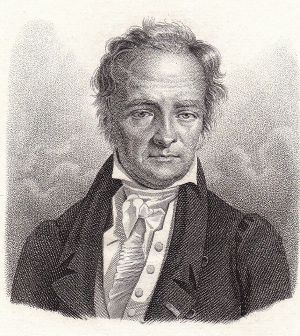
Particularly in the Mémoires historiques she makes an effort to show that she had been "just the wife" and had always behaved in a way that was considered appropriate for a woman of her time. She is indignant that the Jacobin press compared her to the influential noble women from the Ancien Régime. At the same time, through her description of events she shows - consciously or unconsciously - how important her influence was within the Girondin circle, and how fundamentally she contributed to Roland's ministry.[59][60] She provides a fairly reliable and accurate account of events, although she sometimes leaves out things that do not show her in the most favorable light. She was certainly not neutral in her description of people she did not like.
In the Mémoires particuliers she reports on her personal life in a way that was unusual for a woman of that time. She speaks of a sexual assault by a pupil of her father, her experiences during her wedding night and her problems with breastfeeding. In this she followed the example of Rousseau, who also mentions previously inappropriate personal details in his Confessions.
She entrusted the manuscript of her memoirs to the journalist Luc-Antoine de Champagneux, an acquaintance from Lyon. When he also was in danger of getting arrested, the document was burned to prevent it from falling into the wrong hands. In the final months of her imprisonment she wrote the memoirs all over again. This second manuscript was smuggled out of prison in small packages, hidden by Bosc d'Antic during the Terror and is now in the Bibliothèque nationale de France in Paris.[61]
Madame Roland wanted her words to be published after her death. She regretted that she would not live long enough to write the complete history of the French Revolution. In 1795, two years after her death, the memoirs appeared in print for the first time. At least 12,000 copies were sold.[59] This first edition was edited by Bosc d'Antic. References to her love for Buzot and her deistic ideas were "cleansed" by him. In 1864, the sections of text removed by Bosc and five letters from Madame Roland to Buzot were rediscovered. Only then did her connection to Buzot become generally known. In 1905 the complete, uncensored text was published for the first time.[62]
Many of her letters to friends, relatives and co-revolutionaries survived and have been published. These letters are a rich source of information about historical events and people, and about daily life at the end of the 18th century. There are about a thousand letters dating from the period 1767 to 1793. Her main correspondents were her childhood friend Sophie Cannet, her husband, and Bosc d'Antic. She also corresponded frequently with Lanthenas and Bancal d'Issarts, Girondins she considered friends.[63]
Legacy
Biographies
In 1837, the Scottish historian Thomas Carlyle published The French Revolution: a History, his now famous study of the French Revolution. He paid ample attention to the role of Madame Roland, who he called the bravest of French women. Alphonse de Lamartine also praised her in his Histoire des Girondins (1847).[64]

In the second half of the nineteenth century the first biographies of Madame Roland were published. These followed the admiring example of Carlyle and Lamartine and were based on the "censored" versions of her memoirs. Until the 20th century, biographers emphasized her intelligence, feminine charm and high morals, and depicted her primarily as a tragic heroine in the struggle for freedom and equality. The American writer Jeanette Eaton wrote a prize-winning biography about Madame Roland for children, titled A daughter of the Seine (1929).[65]
Women's studies
Madame Roland's memoirs and letters are unique in that they show the French Revolution from the perspective of a very intelligent woman who played an active role in the middle of events. When interest in the role of women in history grew at the end of the twentieth century, there was an upsurge in the number of publications on the life and work of Madame Roland. This helped build a more nuanced and less idealized image of her. There has also been a minor rehabilitation of Jean-Marie Roland, who was traditionally presented as someone intellectually and politically dwarfed by his wife. It is now recognized that although he did not have his wife's charisma and sharp political talent, he was an intelligent and conscientious administrator.[66]
In particular, attention focused on the contrast between Madame Roland's views on the limited role women should play in public life, and her own active and direct involvement in politics. Unlike the feminist revolutionaries Olympe de Gouges and Etta Palm, Madame Roland was not an advocate for political rights for women. She believed that women should play a very modest role in public and political life. Already during her lifetime, many found this difficult to reconcile with her own active involvement in politics and her important role within the Girondins. Madame Roland never spoke out for women's rights. She stated that the time was not yet right for women to openly participate in public debate. It was the role of women to inspire and support the men behind the scenes. Only when all French men were politically and socially free, could women also claim their place in public life. It is possible that here too she followed her idol Rousseau, who felt that women should be mainly supportive and subservient.
At the same time she states in her memoirs that the restrictions imposed by society on women were abhorrent to her, and looking back she found it difficult to accept that for a time she had played only a subordinate role in the collaboration with her husband. However, she chose to conform to the social norms of her time. Her views are closer to those held by Louise de Kéralio than the revolutionary feminists Etta Palm and Olympe de Gouges.[59][60]
In art
The life of Madame Roland inspired writers, film makers and composers:
- Camille de Sainte-Croix and Émile Bergerat wrote the play, "Manon Roland" (1899). [67] Félix Fourdrain wrote an opera: "Madame Roland: Drame Lyrique En Trois Actes Et Cinq Tableaux."[68]
Films included:
- Enrico Guazzoni's (director) (1912) "Madame Roland." Madame Roland was played by Gianna Terribili-Gonzales.[69] Edouard Molinaro (director) (1989). Manon Roland. Sabine Haudepin played Madame Roland.[70]
-
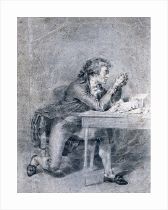
Buzot contemplating a miniature portrait of Madame Roland, by Etienne Charles Leguay
-
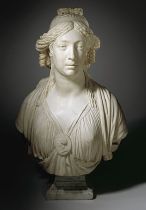
Bust of Madame Roland by François Masson (1745–1807)
-
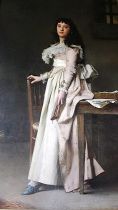
Jules-Adolphe Goupil (1839–1883) Madame Roland's final day. 1880
-
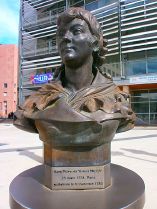
Bust of Madame Roland in Montpellier, by Joseph Carlier (1849–1927)
Publications
- Part 1 Lettres de Madame Roland: 1780–1793. 1900–1902.
- Part 2 Lettres de Madame Roland: 1780–1793. 1900–1902.
- Part 1 Lettres de Madame Roland: 1767–1780. 1913–1915.
- Part 2 Lettres de Madame Roland: 1767–1780. 1913-1915.
- Part 1 Mémoires de madame Roland 1905.
- Part 2 Mémoires de madame Roland 1905.
- The private memoirs of Madame Roland 1901. (English translation of edited text)
Notes
- ↑ Ida M. Tarbell, Madame Roland: A Biographical Study (New York, NY: Charles Scribner's Sons, 1896), 3–7.
- ↑ Sian Reynolds, Marriage and Revolution: Monsieur and Madame Roland (Oxford, UK and New York, NY: Oxford University Press, 2012, ISBN 0199560420), 19–21
- ↑ Tarbell, 29–30.
- ↑ Reynolds, 22–25.
- ↑ Tarbell, 23–26.
- ↑ Reynolds, 27.
- ↑ Tarbell, 35–44.
- ↑ The family name was originally only "Roland." An ancestor had added 'de la Platière' as a reference to an estate owned by the family. Jean-Marie Roland used the noble-sounding version during the Ancien Régime, but abandoned it when noble titles were abolished during the revolution. Reynolds, 33.
- ↑ Reynolds, 43.
- ↑ Reynolds, 54–56, 58.
- ↑ Tarbell, 74.
- ↑ Reynolds, 68–69.
- ↑ Reynolds, 72–74.
- ↑ Tarbell, 76–77.
- ↑ Reynolds, 87, 90.
- ↑ Reynolds, 93–95.
- ↑ Tarbell, 102, 166.
- ↑ Reynolds, 85.
- ↑ Simon Schama, Citizens: A Chronicle of the French Revolution (New York, NY: New York, NY: Vintage, 1990, ISBN 978-0679726104), 174.
- ↑ Reynolds, 111.
- ↑ Tarbell, 123–124.
- ↑ Reynolds, 112.
- ↑ Tarbell, 124–127.
- ↑ Tarbell, 155.
- ↑ Reynolds, 113–115.
- ↑ Tarbell, 142–145.
- ↑ Reynolds, 159.
- ↑ Tarbell, 171.
- ↑ Tarbell, 146–149, 151.
- ↑ Reynolds, 138–140.
- ↑ Peter McPhee, Liberty or Death. The French Revolution (New Haven, CT: Yale University Press, 2017, ISBN 978-0300228694), 111.
- ↑ Gregory Fremont-Barnes (ed.), Encyclopedia of the Age of Political Revolutions and New Ideologies, 1760–1815 Volume 1, (Westport, CT: Greenwood Publishing Group, 2007, ISBN 978-0313334450), 307.
- ↑ Schama, 646.
- ↑ Tarbell, 152–153.
- ↑ The society she joined would have been either the Societé fraternelle des deux sexes or the Societé fraternelle des amies de la vérité. Reynolds, 146.
- ↑ Reynolds, 144–149, 152.
- ↑ Reynolds, 162–167.
- ↑ Reynolds, 168, 174, 179.
- ↑ Reynolds, 181–183.
- ↑ Tarbell, 188–190.
- ↑ Tarbell, 214–219.
- ↑ Stanley Loomis, Paris in the Terror: June 1793 - July 1794 (Philadelphia, PA and New York, NY: J. B. Lippincott Company, 1964), 210.
- ↑ Reynolds, 198.
- ↑ Reynolds, 241, 255.
- ↑ Tarbell, 225–233, 248.
- ↑ Reynolds, 262.
- ↑ Reynolds, 221.
- ↑ Reynolds, 231, 249.
- ↑ Reynolds, 243–244, 251–252.
- ↑ Tarbell, 259–262.
- ↑ Tarbell, 269–284.
- ↑ Reynolds, 270–275.
- ↑ McPhee, 185–186.
- ↑ Schama, 726.
- ↑ Reynolds, 280.
- ↑ Reynolds, 284–285.
- ↑ Paul Hyland, Olga Gomez, and Francesca Greensides (eds.), The Enlightenment: A Sourcebook and Reader (London, UK: Routledge, 2003, ISBN 978-0415204491), 369.
- ↑ Tarbell, 302.
- ↑ 59.0 59.1 59.2 Anne Coudreuse, "Les Mémoires de Madame Roland : être femme dans la tourmente de l'Histoire," Itinéraires 1 (April 1, 2011): 29–43. Retrieved October 8, 2022.
- ↑ 60.0 60.1 Marisa Linton, "Women as Spectators and Participants in the French Revolution," Groniek 45(197) (May 30, 2015). Retrieved October 8, 2022.
- ↑ Reynolds, 279.
- ↑ Sagnac Ph, "Mémoires de Mme Roland," Nouvelle édition critique, par Cl. Perroud, Revue d'Histoire Moderne & Contemporaine 7(7) (1905). Retrieved October 26, 2022.
- ↑ Carl Becker, "The Memoirs and the Letters of Madame Roland," The American Historical Review 33(4) (July 1, 2018): 784–803.
- ↑ Max Nelson, "Unseen, Even of Herself," The Paris Review November 17, 2015. Retrieved October 8, 2022.
- ↑ "Newbery Medal and Honor Books, 1922-Present," Association for Library Service to Children October 16, 2018. Retrieved October 8, 2022.
- ↑ Reynolds, 171.
- ↑ Emile Bergerat, Théâtre de Émile Bergerat (Paris, FR: Librairie Paul Ollendorff, 1899).
- ↑ Félix Fourdrain, "Madame Roland (Fourdrain, Félix) - IMSLP/Petrucci Music Library: Free Public Domain Sheet Music," imslp.org. Retrieved October 12, 2022.
- ↑ Enrico Guazzoni, "Madame Roland - La Cinémathèque française," www.cinematheque, 1912. Retrieved October 12, 2022.
- ↑ AlloCine, "Casting de Manon Roland," Retrieved October 12, 2022.
References
ISBN links support NWE through referral fees
- Becker, Carl. "The Memoirs and the Letters of Madame Roland," The American Historical Review 33(4) (July 1, 2018): 784–803.
- Bergerat, Emile. Théâtre de Émile Bergerat. Paris, FR: Librairie Paul Ollendorff, 1899.
- Coudreuse, Anne. "Les Mémoires de Madame Roland : être femme dans la tourmente de l'Histoire," Itinéraires Issue 1, 2011, April 01, 2011, 29–43. Retrieved October 8, 2022.
- Fourdrain, Félix. "Madame Roland (Fourdrain, Félix) - IMSLP/Petrucci Music Library: Free Public Domain Sheet Music," imslp.org. Retrieved October 12, 2022.
- Fremont-Barnes, Gregory (ed.). Encyclopedia of the Age of Political Revolutions and New Ideologies, 1760–1815 Volume 1. Westport, CT: Greenwood Publishing Group, 2007. ISBN 978-0313334450.
- Guazzoni, Enrico. "Madame Roland - La Cinémathèque française," www.cinematheque, 1912. Retrieved October 12, 2022.
- Hyland, Paul, Olga Gomez, and Francesca Greensides (eds.). The Enlightenment: A Sourcebook and Reader. London, UK: Routledge, 2003. ISBN 978-0415204491
- Linton, Marisa. "Women as Spectators and Participants in the French Revolution," Groniek 45(197) (May 30, 2015). Retrieved October 8, 2022.
- Loomis, Stanley. Paris in the Terror: June 1793 - July 1794. Philadelphia, PA and New York, NY: J. B. Lippincott Company, 1964.
- McPhee, Peter. Liberty or Death. The French Revolution. New Haven, CT: Yale University Press, 2017. ISBN 978-0300228694
- Nelson, Max "Unseen, Even of Herself," The Paris Review November 17, 2015. Retrieved October 8, 2022.
- Ph Sagnac "Mémoires de Mme Roland," Nouvelle édition critique, par Cl. Perroud, Revue d'Histoire Moderne & Contemporaine 7(7) (1905).
- Reynolds, Sian. Marriage and Revolution: Monsieur and Madame Roland. Oxford, UK and New York, NY: Oxford University Press, 2012. ISBN 0199560420
- Schama, Simon. Citizens: A Chronicle of the French Revolution. New York, NY: Vintage, 1990. ISBN 978-0679726104
- Tarbell, Ida M. Madame Roland: A Biographical Study. Alpha Edition, 2022 (original 1896). ISBN 978-9356576889
External links
All links retrieved November 5, 2022.
- Taylor, Ida Ashworth, Life of Madame Roland. London: Hutchinson & Co., 1911.
Credits
New World Encyclopedia writers and editors rewrote and completed the Wikipedia article in accordance with New World Encyclopedia standards. This article abides by terms of the Creative Commons CC-by-sa 3.0 License (CC-by-sa), which may be used and disseminated with proper attribution. Credit is due under the terms of this license that can reference both the New World Encyclopedia contributors and the selfless volunteer contributors of the Wikimedia Foundation. To cite this article click here for a list of acceptable citing formats.The history of earlier contributions by wikipedians is accessible to researchers here:
- Madame Roland history
The history of this article since it was imported to New World Encyclopedia:
- History of "Madame Roland"
Note: Some restrictions may apply to use of individual images which are separately licensed.
↧ Download as ZWI file | Last modified: 02/03/2023 20:30:15 | 9 views
☰ Source: https://www.newworldencyclopedia.org/entry/Madame_Roland | License: CC BY-SA 3.0
 ZWI signed:
ZWI signed: KSF
KSF